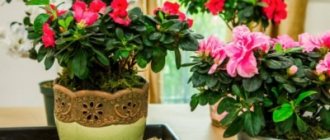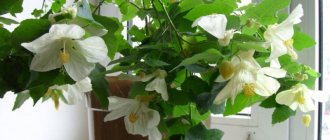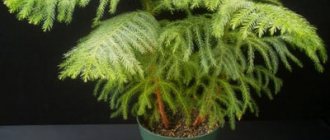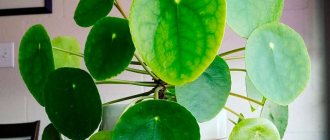The indoor azalea is a representative of the rhododendron genus and a close relative of the garden beauties - tall rhododendrons. There are several hundred species in the wild, but only two and their hybrid forms are grown at home.
The indoor azalea flower is a compact shrub 30–50 cm high with abundant and very beautiful flowering, which has made it popular among indoor plant lovers. Its flowers are lush, in shades of red, white and pink, there are varieties with lilac and two-color corollas. Azalea is also valued because it blooms in the cold season, when most other flowering plants are dormant.
Types and varieties of indoor azalea
There are two types of indoor azaleas.
Indian azalea (indica), or Sims' rhododendron (Rhododendron simsii) (1). The most popular type, it is the one that can most often be found on sale. It is an evergreen shrub with small dark green leaves with reddish pubescence. The flowers of this indoor azalea are simple or double, usually reach sizes of 3 - 5 cm or larger and are collected in round inflorescences.
Japanese azalea, or blunt rhododendron (Rhododendron obtusum) (2) . Less common. Its flowers are small compared to Indian ones and more neat in shape. Japanese azalea can also be grown as a garden plant.
As for the varieties of azaleas, they are mainly known only to collectors: in stores and shopping centers, hybrid azaleas are most often sold, which are usually called “Azalea white / pink / red” or “Azalea mix”, and sometimes simply “Azalea indica” . Azalea varieties may differ in flowering time: early winter or mid-winter - early spring. Unfortunately, it is unlikely that you will be able to find out such details when buying an azalea in a store - the characteristics of the variety (and at the same time its name) can only be found out when purchasing a plant from a collector.
The most famous of the old varieties are (3):
- Adventsglocken - a tall (45 - 50 cm) variety with single large (6 - 8 cm) raspberry-pink flowers that stay on the plant for up to 20 days;
- Vervaeneana - a tall variety with semi-double large flowers (8 - 8.5 cm) of pink color with a white border along the edges of the petals, blooms for 190 days;
- Max Schäme - tall, with double flowers with a diameter of 8 - 8.5 cm, petals of a salmon shade strongly corrugated along the edge, blooms for 130 days;
- White Niobe (Niobealba) is a tall (45 - 60 cm), spreading azalea with white double flowers with a diameter of 8 - 9 cm, blooms for 80 days;
- Schnee is a tall variety with semi-double white flowers, blooms for 130 days.
Landing, transplant
Many gardeners believe that it is better to buy a plant with a closed root system; such a flower will take root faster when planted. Some gardeners prefer to shake off the old lump of earth and soak the roots of the flower in a growth stimulator. Both methods of planting can be done if you take into account the general rules:
- It is better to buy a plant in specialized stores. When purchasing, inspect the plant, make sure that the leaves look healthy and are not affected by pests. The flower stem is without lesions or scratches, hard and dense. If possible, remove the plants from the pot and inspect the roots: a healthy root system is light in color.
- Having brought the flower home, put it in the bathroom for a day, let the plant adapt to the microclimate. After two days, place the flower on the windowsill, and only after 3-5 days can you start planting.
- When planting azaleas in a new pot, use specialized potting soil.
- The day before planting, water the plant with Kornevin, this will reduce stress during replanting and ensure rapid establishment of the flower in new conditions.
- It is better to plant the plant before or after flowering; if you plant a flowering rhododendron, there is a possibility of buds dropping.
- The container for planting azaleas should be 2-3 cm larger than the diameter of the earthen ball. You can’t plant a plant right away in a huge pot, this will lead to a stressful state and the flower will start to hurt. Fill with soil, water and leave for a day. Planting (transplantation) is carried out only the next day.
- When planting (transplanting, or transshipping) azaleas, make sure that there are no voids left around the roots of the plant. Press the soil onto the roots with care so as not to damage the fragile roots. After planting, water.
- After planting, it is better to place the plant in a cool, shady place. After 5-7 days, the flowerpot with azalea can be placed on the windowsill.
Caring for indoor azalea at home
Azalea is a capricious plant, demanding on growing conditions. This is due to the fact that in nature azaleas gravitate to cool mountain climates and certain types of soil (4).
Priming
The soil for indoor azaleas should be acidic; in neutral and alkaline soils, the plant gets sick and may die. Of the ready-packed soil mixtures, only special ones are suitable for it - for azaleas, rhododendrons, camellias and heathers.
Experienced flower growers prepare soil for azaleas on their own, but this is difficult for amateurs, and with this approach it is difficult to maintain the optimal acidity level required by the plant.
Indian azalea. Photo: pixabay.com
Lighting
Indoor azaleas prefer bright, diffused light; in direct sun, their growth is inhibited, and leaves and flowers can get burned. It is possible to grow indoor azaleas in partial shade, but in winter, during the period of bud formation and flowering, azaleas may require additional lighting with a phytolamp.
Temperature
One of the main difficulties in caring for an indoor azalea is providing it with a suitable temperature regime. Azaleas are cold-loving, the optimal temperature for them outside the flowering period is 15 - 18 ° C, and lush flowering is often stimulated by a decrease in temperature during the period of bud formation to 10 - 12 ° C.
Indoor azalea does not tolerate summer heat well; the upper limit it can tolerate is about 20 °C. Moreover, sudden changes in temperature also harm the plant, especially at the moment of formation of buds - in such conditions they can fall off and there will be no flowering.
Being in a draft is also harmful for azaleas, but periodic ventilation of the premises is beneficial for it. When growing azaleas in a city apartment, it is recommended to place them in the summer on a balcony oriented north or west, but in no case to the south. In winter, it is better to keep the plant as far as possible from heating devices; acceptable conditions can be provided for it on an insulated glazed balcony with moderate heating. If you live in a country house, the best place for an azalea will be a cool veranda or terrace.
Humidity
Indoor azalea requires high humidity, so it must be sprayed frequently. During flowering, this must be done especially carefully, because drops of water darken the flowers. You can spray water from a fine spray bottle around the plant, place containers of water next to it, or place the pot in a tray with damp sphagnum, expanded clay or gravel.
Japanese azalea. Photo: pixabay.com
Watering
Proper watering is another difficulty in caring for indoor azaleas. The plant requires moist soil, but with excess moisture it is very quickly affected by root rot. The earthen ball should always be slightly moist; drying out is unacceptable. During flowering, azaleas require more abundant watering than usual. After watering, the water remaining in the pan is drained immediately.
When the soil is dry or in the summer heat, a container with indoor azalea can be placed in a basin of cold water for a while. Some gardeners find it useful to alternate this type of bottom watering with regular watering throughout the year. When growing indoors, it is very useful to place pieces of ice on the soil in the pot instead of watering. Azalea tolerates cold well, and at high air temperatures, watering with cool water can partially compensate for keeping it too warm.
Water for watering azaleas should be soft, well-settled (for at least 2 - 3 days) - impurities contained in tap water can harm the plant. Lime is especially dangerous for it, since watering with lime water reduces the acidity of the soil. The plant also reacts very poorly to chlorine. About once every 10 - 14 days, you can add a few drops of lemon juice to the water for irrigation - this helps maintain the required pH of the soil and promotes abundant flowering of the azalea.
Fertilizers
Indoor azaleas are suitable only for special fertilizers for azaleas, rhododendrons and camellias, preferably in liquid form. Experts in growing azaleas sometimes recommend applying fertilizers with a high content of phosphorus and potassium and a low content of nitrogen during the budding period, but it is difficult for an amateur gardener to determine which proportions are considered correct, so it is better to refrain from experiments.
Azalea during budding. Photo: pixabay.com
Feeding
In spring and summer, fertilizers are applied along with watering once a week in the dosage specified in the instructions. In winter, fertilizing is applied much less frequently - once every 4 weeks.
Trimming
The formation of a beautiful dense bush in an indoor azalea is possible only with regular, proper pruning.
After the azalea has faded, be sure to remove the flowers and shorten the shoots by several centimeters. At the same time, sanitary pruning of the bush is carried out: all dried, weak and non-flowering shoots are cut off.
At the end of spring - beginning of summer, when young shoots appear on the bush, their tops are pinched. It is advisable to pinch the shoots throughout the season, until buds appear on the plant. At this time, you need to monitor the appearance of sprouts near the flower buds and carefully remove them. To prolong the flowering of indoor azaleas, fading flowers are plucked out one at a time.
Trimming and pinching
One of the important stages in the development of azaleas is timely pruning and pinching. This gives the bush a beautiful shape and stimulates flowering. The pruning procedure is carried out using sharp pruning shears or scissors wiped with disinfectants. Trim the plant after flowering has ended. The crown of indoor azaleas is formed in the shape of a ball: elongated, crooked or dried shoots are cut off. To prevent the shoots from intertwining inside the crown and interfering with ventilation, cut out the branches growing inside the bush.
To speed up the development of side shoots, pinch the tops of the stems with your hands to 8-10 cm. This procedure will force the plant to form side shoots on which flower buds are formed. After 2-3 weeks they will appear from the leaf axils, the plant will begin to form a beautiful, lush crown.
Reproduction methods
Most often, azaleas are propagated indoors by cuttings. Due to the fact that not all cuttings produce roots, experts advise planting several cuttings at once.
Semi-lignified shoots are used to take cuttings. The length of the segment should be from 50 to 80 mm. Tear off all the lower leaf plates from the cuttings, and dip the cut area in a root growth stimulating agent (Kornevin or Heteroauxin). The sections are buried 15–20 mm into an acidic soil mixture for adult bushes, and it is recommended to mix it with charcoal. Cover the top of the container with glass or film, then place it on a well-lit windowsill, protected from direct sunlight.
Provide the cuttings with daily ventilation and timely moistening of the substrate after it dries. The sections are regularly moistened with a spray bottle. The cuttings produce roots best at a temperature of about 20 degrees. The roots appear after 4–8 weeks. The young bush will begin to bloom for the first time in the second or third year.
Azalea propagation by cuttings
Flower varieties
The most popular variety of plant to grow at home is the Indian Azalea, which grows to a small shrub 30-50 cm.
Less common are varieties of Japanese Azalea.
Among the most popular varieties:
- Albert Elizabeth;
- Stella Maris;
- Knap Hill;
- Warbler;
- Czardas;
- Madame Jean Peters;
- Golden Eagle;
- Watercolor;
- Golden Lights.
Indian azalea
Botanical description
Azaleas are divided into two groups:
- deciduous plants, including small trees;
- evergreens.
Azalea flowers have five stamens, while rhododendron flowers have 7 or more - this is the main difference between azaleas and rhododendrons. The indoor azalea is one of the most beautiful plants, but it is quite capricious. The azalea plant can bloom for up to six months with simple, double or densely double white, red, pink, dark purple and variegated flowers, but on average the flowering period lasts just over two months. Azalea leaves are small and dark green.
Which family does it belong to?
Azalea represents the heather family, genus - rhododendrons, subgenus - azalea.
INTERESTING! Among amateur florists, it is customary to distinguish between rhododendrons and azaleas. This is how azaleas are called deciduous plant species, and rhododendrons are evergreen plant species. Of course this is wrong. But keep this fact in mind when you buy a flower in a store.
Azalea is a distant relative of plants such as heather, snakewort, bilberry, blueberry and cranberry.
Photo
In the photo below we can see how beautiful indoor azaleas look in the interior, as well as how outdoor rhododendron can be used in landscape design:
Main types of azaleas for the home
Caring for a plant at home is not easy. Only 2 types of azalea have adapted to being kept in an artificial environment:
| Name | Description | Flowers | Leaves |
| Indian (Sinsa) | Indoor variety. Up to 50 cm in height. Stems with hard, red-brown hair. | White, scarlet, motley. The buds open at the same time. | Ovate, on shortened petioles. There are soft hairs on the inside. |
| Japanese | Usually grown in garden plots. Reaches 40-60 cm. A distinctive feature is winter hardiness, withstands down to -20 ° C. | From salmon to dark red. They bloom with leaves at the same time, sometimes earlier. | Up to 5 cm. |
Varieties of Indian azalea
The azaleas that decorate living spaces are hybrids of the Indian variety. Common varieties:
| Name | Description | Flowers |
| Snowflake | Strongly branching shrub. Resistant to fungal and bacterial infections. | Non-double, lilac-pink with brick dots. |
| Albert-Elizabeth | Blooms buds at the end of winter. | Large, snow-white or light pink, with frames and corrugated edges. |
| Celestina | A spreading shrub that blooms from early spring. | Single, bright crimson. |
| Starfish | A bush of compact size with dark green, shaggy leaves. | Snow-white with crimson streaks at the base. |
| Madame Joly | Deciduous hybrid. | Simple, pinkish, orange-yellow at the base. |
| Czardas | Produces buds in April. Demanding on lighting. If there is a shortage of it, it loses its decorative appearance. | Creamy yellow, terry, with a pleasant aroma. |
| Satan | Up to 1.5 m. | Fiery red with yellow reflections. |
| Warbler | Forms a crown in the form of a ball. | White, with two corollas. |
| Golden lights | It blooms profusely, is frost-resistant, grows up to 1 m. | Golden yellow. |
| Azure | Low-growing shrub with many branches. | A rich blackberry shade with bright raspberry splashes on the inside. |
| Koichiro Wada | Variegated hybrid. Resistant to frost, easy to care for. | When unopened, they are crimson-pinkish, becoming lighter during flowering. |











